
Billion-Dollar Brain is a 1966 Cold War spy novel by Len Deighton. It was the fourth to feature an unnamed secret agent working for the British WOOC(P) intelligence agency. It follows The IPCRESS File (1962), Horse Under Water (1963), and Funeral in Berlin (1964). As in most of Deighton's novels, the plot of Billion Dollar Brain (1967) is intricate, with many dead ends.
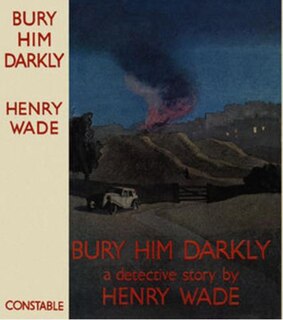
Bury Him Darkly is a 1936 mystery detective novel by the British writer Henry Wade. It was the fourth in a series of seven novels featuring the character of Inspector Poole. Along with the following Poole novel, Lonely Magdalen, it marked a shift towards more realistic police procedurals that has been described as pioneering. Superintendent Fraser, who appeared in Wade's fist novel The Verdict of You All, also appears as one of the characters.
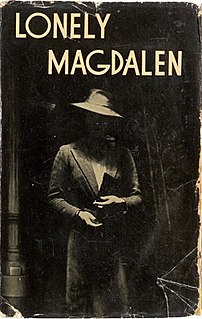
Lonely Magdalen is a 1940 mystery detective novel by the British writer Henry Wade. It was the fifth in a series of seven novels featuring the character of Inspector Poole, published during the Golden Age of Detective Fiction. The book focuses more closely on police procedural than the traditional puzzle format. There was a thirteen year gap between this and the next entry in the series Too Soon to Die.

The Curse of Doone is a 1928 mystery thriller novel by the British writer Sydney Horler. It also has element of horror about it. It was published in America in 1930 by The Mystery League.

I'll Say She Does is a 1945 thriller novel by the British writer Peter Cheyney. It is the tenth in his series of novels featuring the FBI agent Lemmy Caution. Later editions of the book are generally titled I'll Say She Does!
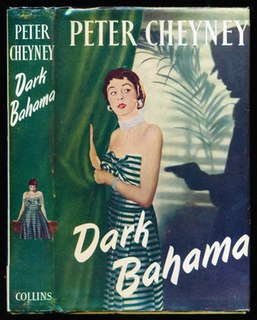
Dark Bahama is a 1950 thriller novel by the British writer Peter Cheyney. It was the second in a trilogy featuring the private detective Johnny Vallon, a hard-drinking former army officer. The story also features Quale, the head of British intelligence who appears on several other novels by Cheyney. Much of the action takes place in a fictional island in the Bahamas and nearby Miami in Florida.

Ladies Won't Wait is a 1951 spy thriller novel by the British writer Peter Cheyney. It is a sequel to the 1945 novel Sinister Errand and portrays the continued adventures of Michael Kells, a half-American, half-British secret agent. It was published in the United States under the alternative title Cocktails and the Killer.
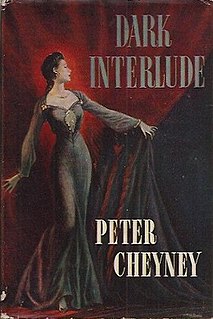
Dark Interlude is a 1947 spy thriller novel by the British writer Peter Cheyney. It features a British secret agent Shaun Aloysius O'Mara and his superior Quale, a recurring figure in Cheyney's novels.

Dark Duet is a 1942 spy thriller novel by the British writer Peter Cheyney. Cheyney had become known for his hardboiled crime thrillers featuring Lemmy Caution and Slim Callaghan, but this novel was his first fully-fledged espionage novel. The novel is set in wartime London, Lisbon and Ireland. It was published in the United States with the alternative title The Counterspy Murders.

The Stars Are Dark is a 1943 spy thriller novel by the British writer Peter Cheyney. It was published in America with the alternative title The London Spy Murders. It follows on from the 1942 novel Dark Duet focusing on British counter intelligence operations during the Second World War, and introduces the character of Quale a senior British intelligence officer would appear in several novels.
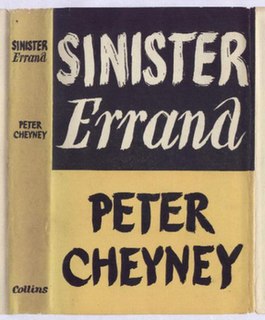
Sinister Errand is a 1945 spy thriller novel by the British writer Peter Cheyney. Cheyney known for his creations Lemmy Caution and Slim Callaghan, introduced a new character the half-American secret agent Michael Kells. It was followed by a sequel Ladies Won't Wait in 1951.

Up the Ladder of Gold is a 1931 thriller novel by the British writer E. Phillips Oppenheim. He dedicated the work to the comedy writer P.G. Wodehouse. It represented the apex of Oppenheim's portrayal of the great man as a dynamic force.

Miss Brown of X. Y. O. is a 1927 mystery thriller novel by the British writer E. Phillips Oppenheim. It was notable amongst thrillers of the time for its use of an everyday female character as heroine.

A Lost Leader is a 1906 politically-themed novel by British writer E. Phillips Oppenheim. Later better known for his thrillers, it was one of several novels Oppenheim wrote at the time centred on "social political life". In it, a potential Liberal Party politician, Lawrence Mannering, is lured back from his country estate to London to revive the party's fortunes.

Mysterious Mr. Sabin is a 1898 spy thriller novel by the British writer E. Phillips Oppenheim. It was the first spy novel by Oppenheim, a genre which he came to dominate during the First World War and interwar era. Revolving around a plot of a Frenchman selling British military secrets it became a bestseller, establishing him as a popular writer. It has been described as the novel "that launched Oppenheim's career of xenophobic espionage fantasy". It contains elements of invasion fiction, a common genre theme at the time.

The Cold Dark Night is a 1957 spy thriller novel by the British writer Sarah Gainham. Her second novel, it is set at the height of the Cold War when the 1954 Berlin Conference saw the Big Four foreign ministers arrive in the divided city. Gainham had worked in Berlin as a journalist at the time of the Conference.

The Chasm is a 1947 thriller novel by the British writer Victor Canning. It was his first novel since the Second World War during which he had served in the Royal Artillery and was largely absent from the writing world. Later he increasingly turned to espionage and crime novels. It takes place in Italy where Canning had served during the Italian campaign.

The Whip Hand is a 1965 spy novel by the British writer Victor Canning. It is the first in a series of four novels about Rex Carver, a private detective drawn back into his old profession of espionage. The novel also features the secret service agent Manston who had previously appeared in The Limbo Line, Canning's previous novel.

Firecrest is a 1971 spy thriller novel by the British writer Victor Canning. A stand-alone novel, it introduced a more modern, darker and naturalistic style compared to Canning's previous novels. It marked the first appearance of "The Department", a shadowy dirty tricks agency working for the British government which featured in subsequent novels.

The Claverton Mystery is a 1933 detective novel by John Rhode, the pen name of the British writer Cecil Street. It is the fifteenth in his long-running series of novels featuring Lancelot Priestley, a Golden Age armchair detective. It was published in the United States by Dodd Mead with the altered title The Claverton Affair. The tone of the book has been described as much darker than the author's other novels.




















